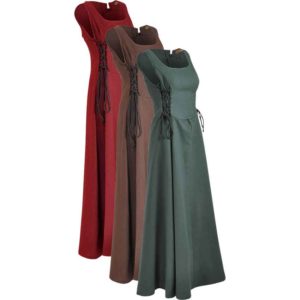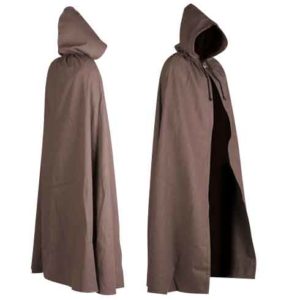Medieval Easter Traditions

Easter is a holiday alive and well in today’s world. It was equally as important if not more so for the medieval European. How do today’s traditions relate to medieval Europe’s view of Easter? In this post, we look at Easter traditions and their medieval connections.
Easter’s Name and Date
In English, Easter is called exactly that. Easter. This word stems from German’s influence on the English language. In both German and Old English, the etymology of the word stems from a Celtic goddess called Eostre. According to Saint Bede, this goddess gave her name to a month that corresponds to April. It was known as Ēastermōnaþ or Eastermonath in West Saxon. The connection continued through to the name of the holiday itself. For a very long time, Bede was the only known source of this stated connection. In fact, it wasn’t until 1958, over 1000 years later, that historians found another source that confirmed this connection. Eostre’s name is also a cognate with the pagan holiday of Ostara. Regardless, this Celtic goddess of Eostre is where the Germans and the English get the name of Easter.
In many other languages, the name for the Easter holiday is Pascha, or some form of that word. This is especially true in any Romance language such as Portuguese (Pascoa), Italian (Pasqua), and French (Paques). The Latin and earlier Greek version of this word referred to the Jewish holiday of Passover. Passover is a lunisolar holiday, meaning it is variable depending on the phases of the moon. Easter is no different in that regard.
For Western Christians, Easter is the first Sunday after the full moon after March 21st. Yes, that sounds rather complicated. It can be even more complicated when you realize that Eastern Christianity doesn’t follow the same calendar as the West and therefore has a different date for Easter as well. This variability caused controversy through history, especially in the 300s. There is still debate about when this holiday should be.
Easter Eggs
Easter eggs are a large part of current festivities. Eggs in medieval Europe were also very important at Easter. Beginning with Ash Wednesday, the church prohibited medieval Christians from eating eggs during Lent. They could only begin eating them again on Easter. They also couldn’t eat eggs during any other fasting days during the year so Lent wasn’t special for that.
However, it is good to point out that medieval people were unlikely to have had access to fresh eggs up to just before Easter anyway. Chickens have a tendency of pausing egg laying during winter. Some people have argued that eggs were boiled to keep them through Lent. While people were unlikely to have fresh eggs at the beginning of Lent, this tradition may have been possible towards the very end of Lent when egg laying may have started back up and the restrictions were still in place.
There are also non/pre-Christian associations with eggs and spring. For many cultures, eggs represented fertility and new life. These cultures had their own traditions that were later incorporated into Christian traditions for Easter. The Ukrainian tradition of Pysanky is a great example. This tradition involves wax resist decorating on raw eggs. The designs would be painted on with wax, and then the egg would be dyed. Going from light colors to dark, more wax designs would be added with each additional layer of color. At the end, the wax would be melted off, revealing the design.
Decorating eggs was a tradition that existed in pre-Christian Slavic cultures. However, Pysanky eggs are now associated with Ukrainians at Easter. They feature a wide range of designs and colors.
Easter Bunny
Sadly, this highly popular modern tradition has relatively modern roots. The first official mention of an Easter bunny is in 1682 by Georg Franck von Franckenau in his De ovis paschalibus. Other than that, most traditions with Easter bunnies don’t really start until around the 19th century. Sorry, there aren’t any strong medieval connections here.
New Clothes
This one may seem weird to a modern audience. While dressing up is definitely a big part of Easter, getting new clothes isn’t necessarily a tradition. However, for the medieval European, it was definitely a part of Easter. The idea was that people would give clothes, their own or new ones, to people lower than them in society. Kings would give clothes to their warband leader. They would in turn give to the steward and so on. The Cyfraith Hywel Dda in Wales would outline what each person would give and to whom. This tradition showed the bonds and understandings, or lack thereof, between lord and vassal.
-
Uma Canvas Dress
SKU: MY100477$48.00 Add to Cart This product has multiple variants. The options may be chosen on the product pageRated 5.00 out of 5 -
Ursula Premium Canvas Skirt
SKU: MY100359$25.36 – $54.00 Add to Cart This product has multiple variants. The options may be chosen on the product pageRated 5.00 out of 5 -
Aaron Canvas Cloak
SKU: MY100149$43.00 – $47.00 Add to Cart This product has multiple variants. The options may be chosen on the product pageRated 4.87 out of 5 -
Bastian Shirt
SKU: MY100105$38.00 Add to Cart This product has multiple variants. The options may be chosen on the product pageRated 4.85 out of 5
Hocktide
Hocktide has easily one of the weirdest medieval traditions surrounding Easter. This tradition was mostly limited to the English. Hocktide referred to the Monday and Tuesday after Easter. These were days for paying biannual rent, for rest, and the weird tradition we are about to mention. On Hocktide, women would capture, tie-up, and hold for ransom local men. The ransom fee would be paid to the church as a sort of fundraising event. This tradition has only survived in a single town and has been changed quite a bit since the medieval period, for rather obvious reasons.
While people today have various Easter traditions, many of them have roots in the medieval world. In this post, we looked at different traditions and their connections to medieval Easter. What are you looking forward to this Easter and which if any of these traditions do you still practice?
Sources:
https://www.tor.com/2019/04/19/the-medieval-origins-of-easter-traditions/
https://castlesandturrets.com/2021/04/04/how-to-celebrate-easter-medieval-style/
https://medievalisterrant.wordpress.com/2013/03/29/medieval-easter-traditions/
https://aethelmearcgazette.com/2015/04/05/medieval-easter-traditions/
https://www.boydsflowers.com/blog/easter-traditions-today-dating-back-medieval-times/












